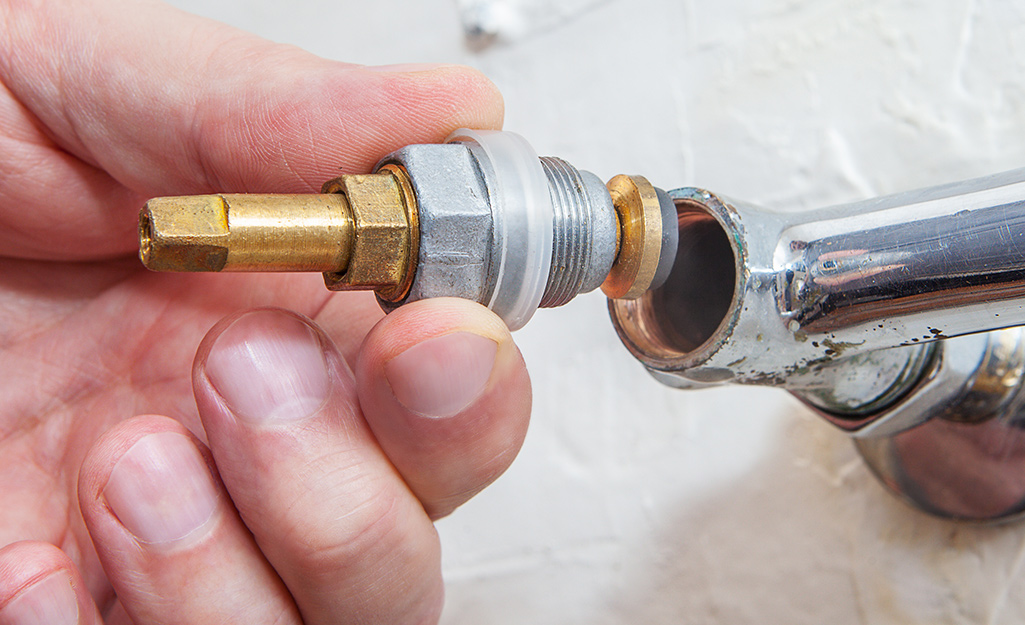Your Upsides of Dealing with a Leaking Faucet
Your Upsides of Dealing with a Leaking Faucet
Blog Article
How do you feel in regards to Why Are My Faucets Dripping (And Can I Fix It Myself)??

Leaking faucets might look like a minor aggravation, yet their effect exceeds just the aggravation of the audio. From wasting water to incurring unneeded economic expenses and health threats, neglecting a dripping tap can result in numerous repercussions. In this article, we'll look into why it's important to resolve this typical house concern quickly and properly.
Wastage of Water
Ecological Influence
Dripping faucets add significantly to water waste. According to the Epa (EPA), a solitary tap dripping at one drip per second can squander more than 3,000 gallons of water per year. This not only strains water resources however likewise impacts ecological communities and wildlife based on them.
Step-by-Step Guide to Fixing a Dripping Faucet
Tools Needed
Prior to attempting to fix a trickling tap, gather the required devices, including an adjustable wrench, screwdrivers, replacement parts (such as washers or cartridges), and plumber's tape.
Common Tap Issues and Their Solutions
Determine the sort of faucet and the particular problem triggering the drip. Usual problems include damaged washers, corroded shutoff seats, or malfunctioning O-rings. Describe manufacturer directions or online tutorials for detailed assistance on repairs.
Financial Expenses
Increased Water Expenses
Past the environmental effect, trickling faucets can pump up water expenses substantially. The built up wastefulness gradually converts right into higher utility costs, which might have been prevented with prompt fixings.
Potential Residential Property Damages
In addition, long term leaking can result in damage to fixtures and surfaces bordering the tap. Water buildup can create discoloration, rust, and even architectural concerns if left ignored, causing extra repair work costs.
Wellness Worries
Mold And Mildew and Mildew Development
The continuous presence of dampness from a leaking faucet develops a suitable atmosphere for mold and mold growth. These fungis not only endanger indoor air top quality however likewise position health and wellness threats, specifically for people with respiratory conditions or allergic reactions.
Waterborne Illness
Stationary water in dripping taps can come to be a breeding ground for microorganisms and other microorganisms, increasing the threat of waterborne conditions. Pollutants such as Legionella bacteria thrive in stationary water, potentially leading to major illnesses when ingested or breathed in.
DIY vs. Professional Fixing
Pros and Cons of Do It Yourself Repair Work
While some might attempt to fix a trickling faucet themselves, do it yourself fixings include their very own set of obstacles. Without proper understanding and devices, DIY attempts can aggravate the problem or cause insufficient repair work, extending the trouble.
Advantages of Hiring a Professional Plumber
Employing an expert plumber makes certain that the underlying cause of the dripping faucet is dealt with successfully. Plumbers have the proficiency and equipment to diagnose and repair tap issues efficiently, conserving time and decreasing the threat of additional damage.
Ecological Duty
Private Contribution to Preservation
Taking responsibility for fixing trickling faucets aligns with broader initiatives towards water preservation and ecological sustainability. Every person's activities jointly make a significant effect on preserving priceless resources.
Sustainable Living Practices
By prioritizing prompt repair work and taking on water-saving habits, people contribute to sustainable living methods that profit both existing and future generations.
Preventive Measures
Normal Maintenance Tips
To stop trickling taps, execute routine maintenance such as cleansing aerators, examining for leaks, and changing damaged components promptly. In addition, take into consideration installing water-saving tools or upgrading to much more efficient fixtures.
Significance of Prompt Fixes
Addressing leaking faucets as soon as they're seen stops more water wastage and prospective damages, ultimately conserving both water and money over time.
Effect On Property Worth
Assumption of Well-Maintained Property
Maintaining a residential or commercial property in good condition, consisting of addressing maintenance concerns like trickling taps, improves its regarded value and value amongst prospective buyers or renters.
Influence on Resale Worth
Qualities with well-kept plumbing fixtures, consisting of taps, command higher resale worths in the realty market. Addressing leaking taps can add to a positive impression throughout building inspections and arrangements.
Final thought
Resolving a dripping tap surpasses plain ease; it's a necessary action towards preserving water, lowering monetary expenses, and securing wellness and property. Whether via do it yourself repairs or specialist aid, doing something about it to deal with dripping faucets is a tiny yet impactful method to promote accountable stewardship of sources and contribute to a much healthier, more lasting future.
How to Fix a Leaky Faucet: Step-by-Step Repair Guide
A leaky faucet may seem like a simple annoyance, but if it's not fixed promptly, that leak could cost hundreds to potentially thousands. From water damage to mold, mildew, and high water bills, even a tiny leak can be catastrophic if left unattended. Damage like this can even affect the overall value of your home, so it's important to take the right approach for leaky faucet repair. You may need the help of a plumber in some cases, but we've got a few tips you can try on how to fix a leaky faucet before calling the pros.
Four Faucet Types
When you're learning how to fix a leaky faucet, the first step is knowing what kind of faucet you're working with! There are four common types.
Cartridge Faucets
Cartridge faucets come in one- or two-handled varieties. In one-handled cartridge faucets, hot and cold water combines in a single cartridge. In the two-handled versions, hot and cold water are controlled separately and mixed in the faucet.
Ball Faucets
Ball faucets have a single lever you push up and down to adjust the pressure and rotate to change the temperature. A slotted metal ball controls the amount of water allowed into the spout.
Compression Washer Faucets
They're the oldest type of faucet, but they're still used in many homes — especially older ones. Compression faucets have two separate handles that, when turned, raise or lower the washer that seals a water valve. This valve stops water from flowing through the faucet when it is turned off.
Disc Faucets
Disc faucets rarely need to be repaired due to their maintenance-free design. The water flow is controlled by two discs — the upper one raises and lowers against a fixed lower disc, creating a watertight seal. If your disc faucet starts leaking, you may need to replace the seals or clean residue buildup from the inlets.
Fixing a Leaky Faucet
Step 1: Turn Off the Water
Whether you're learning how to fix a leaky bathtub faucet or how to fix a leaky kitchen faucet, always turn off the water supply to your working area when you're fixing a leak. The last thing you want is a flood added to your list of things to fix.
Look for the shutoff valves below your sink or around the tub and turn them clockwise to stop the water flow. If your faucet doesn't have shutoff valves, you may need to turn off the water for the whole house. Check to make sure it's off by turning the faucet on. If nothing comes out, you're ready to start the repair.
Step 2: Take Apart the Faucet
How you disassemble your faucet depends on the type of fixture you have. You can use a flathead screwdriver to remove the caps on top of the handle or handles for cartridge and compression faucets. Inside, you should see handle screws. Unscrew these with a screwdriver to remove the handle.
Disc- and ball-style faucets will typically have an inlet screw near the handle, and removing that will reveal the interior of the faucet.
Detach the Valve Stem
For cartridge- and compression-style faucets, you'll see the inner valve stem or cartridge once you remove the faucet handles. If you have a compression faucet, unscrew the brass valve stem. If you have a cartridge faucet, pull out the cartridge. If your cartridge has been in place for a while, it may require some tools or extra force to remove it due to mineral deposits.
Examine and Replace Parts
Once you've removed the parts, check them out to confirm what needs to be replaced. You may see corroded rubber washers, O-rings, stems, or cartridges. On a ball-style faucet, check the seats and springs for damage.
If you need to repair a leaky disc faucet, check the inlet and seals on the lower disc.
Once you determine what parts must be replaced, visit your local hardware store. Bring the damaged parts with you to ensure you can purchase the correct components to replace them.
Clean Valves and Faucet Cavity
If you've removed a stem or cartridge, you may notice mineral buildup in the faucet's threads. Use white vinegar to clean the valve seat by soaking it for a few minutes, then scrub it away with a soft toothbrush and rinse with warm water. You can also clean the interior of the faucet in the same way.
Reassemble the Faucet
Once your faucet is cleaned and the required parts have been replaced, it's time to reassemble it. Put the pieces back together and slowly turn the water supply back on. Doing this slowly is crucial because too much initial water pressure can damage the new hardware you've just installed.
https://homewarranty.firstam.com/blog/how-to-fix-leaky-faucet

I found that blog entry about Why Is It Important To Fix Your Leaking Tap/Faucet? when browsing on the internet. I beg you pause to promote this page if you enjoyed reading it. Thank-you for taking the time to read it.
Report this page